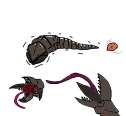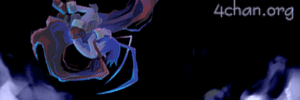| >> |
04/21/12(Sat)15:43 No.18805530
File: 1335037414.png-(54 KB, 548x500, tongued sandworm.png)
 The sandworms haven't changed much over the ages. There have been few offshoots, but it seems that the mighty sandworm has reached near perfection for it's ecological niche. The only major change in body structure is the development of fangs in the secondary set of jaws, which were originally their front legs.
The sandworms can grow into immense size, easily weighting many tons. These creatures are very old however. Eventually, the worms will starve to death, as moving around becomes more and more inefficient as they grow in size.
They grow their whole lives, the young ones are extremely active, constantly swimming trough sand, and attacking other creatures.
They gorge themselves on everything they can kill, they feast and grow, storing away massive amounts of fat under their armored skins.
As the grow, and gain size, their activity lowers. They begin to mainly just lay eggs, only occasionally attempting to feed.
The truly massive worms may weight tens of tons. These creatures manly just wait for their death. They may move once in a year to a better location, and then resume their inactivity.
If something edible passes too close to their resting place, their long tongue will burst out and attempt to grab the creature. Actually moving their bodies would usually consume more energy than the potential prey would even grant them. |

